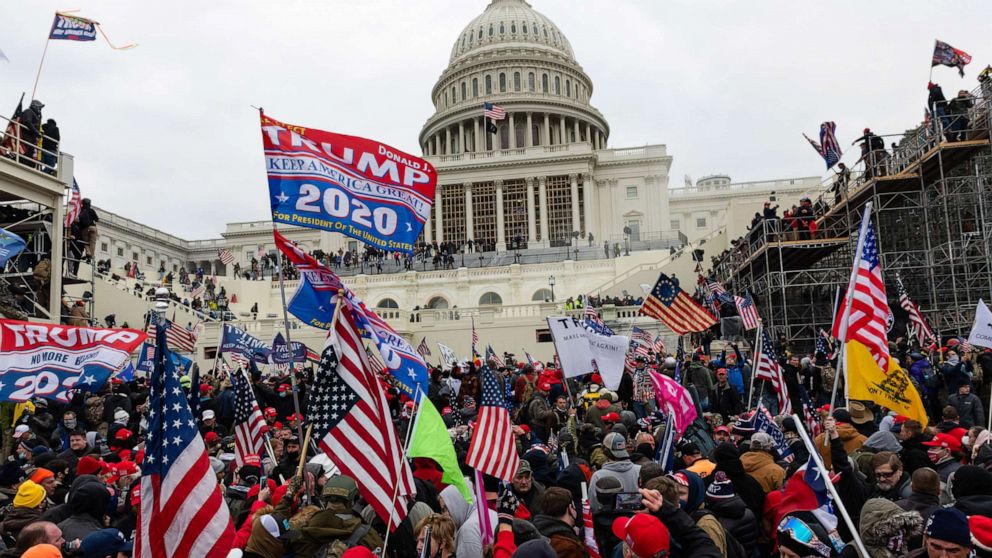

Jacob Stein
Voter Suppression as Stealth Authoritarianism
January 6th, 2021 was a harrowing day in American history by many metrics. The country watched as a mob of President Trump’s supporters stormed the United States Capitol with the intent of overturning a free and fair election. For most Americans, this is likely the most substantive attack on American democracy they will see in their lifetime. In such a time of distress it is very . While President Trump is undeniably complicit in the attack, he and the January 6th attack are merely symptoms of a more structural deficiency that has undergirded American democracy since its inception. Since the right to vote was introduced, , with their policies falling under the umbrella term voter suppression.
For all of American history, voter suppression has been promulgated and heavily racialized by conservative and reactionary parties. After the Revolution, voting was restricted to white property-owning men. Discriminatory state laws and Supreme Court cases ensured that minorities explicitly could not vote. Voter suppression was not widespread because there was simply no vote to suppress. Following the Civil War, the franchise was widely enjoyed for a decade, until . This decision catalyzed a campaign of voter suppression and racial terror that would haunt the South for a century. Democrats quickly developed a formula to destabilize legitimate electoral systems to their advantage. They identified the demographics of their electoral opposition within their jurisdictions, such as African American, then instituted ostensibly colorblind policies that disproportionately impacted them. As an example, African Americans could not bypass impossible exemption because intergenerational wealth and education had been stunted by centuries of slavery. This period ended in 1965 with the Voting Rights Act, which required offending states to check with the federal government before changing their election laws in a process known as preclearance. The Supreme Court case discontinued the preclearance clause, relinquishing electoral control back to the states.
Historical voter suppression was tailored for maintaining regional control within the United States by eliminating the Black vote. While modern voter suppression is still heavily racialized, targeted demographics have expanded beyond just race, and office aspirations are now far greater than the South. As an example, . This rule applied to Harris County which contains the city of Houston, the greatest concentration of Democratic votes within the state. Similarly, gerrymandering, voter IDs, signature matching, and other measures distill the Democratic vote across the country.
With voter suppression being used as a means for higher political offices, we can begin exploring its relationship to democratic erosion, and specifically stealth authoritarianism. as when leaders “cloak repressive measures under the mask of law, imbue them with the veneer of legitimacy, and render authoritarian practices much more difficult to detect and eliminate.” Voter suppression is premised entirely upon the assumption that voter fraud is rampant and destructive in the United States, necessitating voter regulation policy to protect democracy. This creates a paradox in which repressive voting policy is used to inhibit repressive voting practices. The hypothetical existence of voter fraud, however, is what allows American politicians to ‘imbue’ voter suppression with legitimacy because they claim to be solving an existential problem. This makes it much more difficult to fight these policies, whose advocates can then claim that their opponents are practitioners of voter fraud.
Voter suppression can also conveniently be ascribed to other dimensions of stealth authoritarianism. These leaders also rely upon judicial review to legitimize their repressive policy and their credentials, which can be seen in the case of Shelby County v. Holder (2013). Stealth authoritarians also tend to make libelous claims against dissidents to damage their legitimacy. This is present in the Republican accusation that Democrats are fighting their ostensibly good-willed voting policies because they are promulgators of voter fraud. President Trump also . These leaders also use electoral disqualification to solidify their office. Voter suppression intrinsically confers electoral disqualification against Democrats. It is abundantly clear how stealth authoritarians can use voter suppression as a means to the end of legitimized and uncontested political control, especially within the United States.
President Trump was able to use voter suppression as such a powerful weapon that he inspired a violent insurrection without taking any direct action towards seizing power. The occurred under interesting and ironic conditions. President Trump convinced his supporters that their vote has in a sense been suppressed by the validation of a ‘fraudulent’ election. Conversely, Democrats felt the incursions of restrictive policies, and, had the insurrection succeed, would have had their preference overturned. With this in mind, President Trump exploited the tensions around voter fraud and suppression to rile a violent mob into insurrection. Under the assumption that President Trump is a stealth authoritarian, he orchestrated a violent power grab using voter suppression as his weapon, without taking any direct action himself. This clearly demonstrates the potency of voter suppression as a tool for stealth authoritarians. While voter suppression is only one of the weapons in the arsenal of a stealth authoritarian, its efficacy is undeniable. Thus, going forward, both politicians and the populace should take measures to recognize and restrict its repressive capabilities.
Jacob Stein
Hello! I'm a junior at Boston University studying computer science and political science. I have a strong interest in blockchain technology use-cases and implementation. This blog is just meant to document and explore my areas of interests. Feel free to comment, or contact me at jmstein@bu.edu.